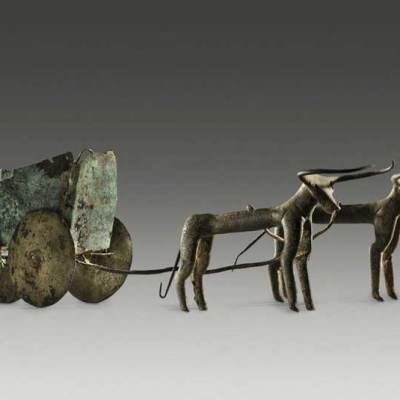This year’s TEFAF Art Symposium explored the relationship between private and public art collections, and was moderated by Apollo editor Thomas Marks. We reproduced his opening speech below.
Our subject today is ‘Private Goes Public’, with a particular emphasis on how today’s collectors are looking to share, exhibit or lend their collections with a wider public, often working closely with public institutions. In Lieven Declerk, Bernadine Bröcker and Sjarel Ex, I’m joined by a panel with very broad interests in, and experiences of, this relationship. We’ll be discussing how its nature is evolving – thinking about the opportunities entailed by technical, institutional or individual innovation, and also considering motivations, responsibilities and ramifications.
That private collectors might have a public in mind is scarcely novel in itself. In fact quite the opposite. For if our museums are a type of landscape, then many of the greatest collectors have historically helped to shape its contour lines, and continue to provide many of its points of orientation. The Ashmolean; the Soane; the Fitzwilliam; the Burrell; the Wallace; the Walker; the Tate; the Boijmans; the Beyeler; the Thyssen-Bornemisza; Isabella Stewart Gardner; Frick; Barnes; Getty; Guggenheim. You get the idea. Here are names that are an eloquent testament to the visions and obsessions of individuals, and in most cases also to their personal sense that what they had built might serve a rich public function. When we talk about the history of museums, we must to a degree always be talking about the history of private collecting as an outward and forward-looking activity.
Of course, some of the institutions I’ve listed are as much monuments to collecting itself as they are about the significance of individual objects or artworks – and many, though not all, play on the character and idiosyncrasies of (as it were) their founding collector accordingly (the Soane; the Barnes). But returning to that terrain of museums, in other ways the historical and indeed current involvement of collectors seems to have become naturalised – so that in places, collectors become inconspicuous or faded features of the museum landscape. Here I am thinking on a grand historical scale about people such as John Julius Angerstein, or even Andrew Mellon at the National Galleries in London and Washington respectively – clearly of central importance to art historians, but marginal to the experience of the general visitor – but also more practically about the bequests of individual works, or about long term loans to museums, or of short-term loans to temporary exhibitions.
I’d bet with some confidence that the majority of visitors to many museum collections are wholly unaware of how they interleave semi-permanent or even permanent loans with works from the museum’s holdings – some one in 50 works in UK museums are on loan from private collections, according to some estimates. In fact, it’s clear that the largely discreet collaboration between individuals and institutions here often only impacts on the public consciousness at those sporadic moments when the sale of a much-treasured work – a Madonna of the Pinks, say, or more recently a Gauguin Tahiti painting – becomes imminent. In the latter case, the Kunstmuseum Basel’s response to the withdrawal of long-term loans from the Staechelin collection: ‘we are painfully reminded that permanent loans are still loans.’ And when it comes to temporary exhibitions, I suspect that the words ‘private collection’ printed on a label have little resonance for most viewers beyond their faint flavour of novelty or rarity. I’m reminded of the title of that Joseph Conrad short story, ‘The Secret Sharer’, in thinking about how private collectors in museums hove into and out of view.
I throw all this out there to get everyone thinking: about what’s happened in the past; about types of discretion and what it means to be in the public eye; about what it means to place things in private ownership on public display. We know that collectors aid museums in many ways (gifts; donations; advice in trusteeships), and that museums may respond in kind with certain types of expertise or access, or with public recognition. But are we also at a juncture when it comes to private collectors facing the public realm?
That’s perhaps the central question I want to pose the panelists today. There’s certainly been a lot of clamour in recent years as to, on the one hand, whether collectors have some kind of duty to make artworks accessible, and on the other about what a museum’s ratification or stamp of approval for a private collection does to the autonomy/independence of that institution, and to the market value of the art. Should we condemn the ‘halo effect’ that puffs up the value of an artwork when it’s been displayed in a museum, or view it as reasonable collateral to what is an otherwise philanthropic gesture? Then there’s the private museum boom to contend with; types of collectors clubs; or museums displaying exhibitions wholly drawn from one private collection.
And there’s a feeling of innovation in this field, with a digital start-up such as Vastari working to reconfigure the contact between collectors and museum curators, and, as we’ll hear shortly, pioneering museum-led projects such as the Public Art Depot at the Museum Boijmans van Beuningen in Rotterdam. Such things might not merely grant the public access to artworks, but who knows, could also reinvigorate public interest in the value of collecting itself.
‘Private Goes Public: The TEFAF Art Symposium’ was held at the Maastricht Exhibition & Congress Centre (MECC) on 13 March, as part of TEFAF 2015 (until 22 March).
Related Articles
TEFAF 2015: Susan Moore previews this year’s fair
Private Views: how do you open a private collection up to the public? (Katy Barrett)


